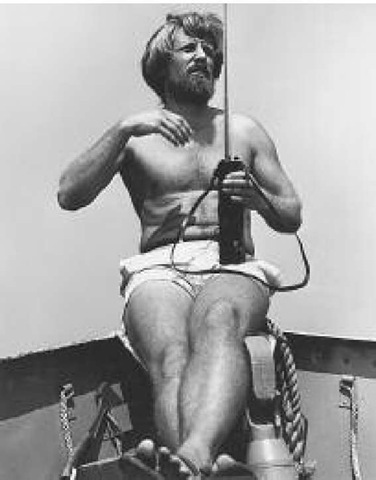(1937- ) American Marine Geologist, Geophysicist
Island arcs are one of the major discoveries by the giants of plate tectonics. These convergent zones of ocean plate consumption, however, exhibit many complex relations and processes that are unique on Earth. If a student researched the literature to learn about these features, he or she would quickly learn that one of the foremost authorities on them is Daniel Karig. The interaction of rapid deformation complexly interacting with rapid sedimentation forms a radically diverse deposit sitting within a deep-sea trench. This pile of complex sediment plus metamorphic and igneous rock forms the forearc or accretionary prism or wedge and is analogous to the wedge-shaped pile of snow scraped up by a snowplow. Because it is such a dynamic system, erosion and sedimentation work in concert. In addition to normal sedimentary processes, there is tectonic erosion and addition of material and the regular earthquakes in these zones play a role in shaking sediments loose. Daniel Karig studied these sediments in several ways. He studied them on land where the forearc prism emerges above sea level; he studied them in deep-sea drill cores taken within these areas; and he studied them aboard submersible vehicles like the famous
ALVIN launched from the research vessel, Glomar Challenger. He studied exposed forearc prisms in Japan, Iran, the Philippines, and Indonesia. He studied these areas directly on Deep Sea Drilling Program (DSDP)/Ocean Drilling Program (ODP) projects in several areas in the western Pacific Ocean (Marianas, Philippines, Sumatra, etc). These studies resulted in such papers as “Ridges and Basins of the Tonga-Kermadec Island Arc System” and “Structural History of the Marianas Island Arc System,” among others. He later modeled the features he observed by building an analog experimental subduction zone apparatus to study the paths of deforming objects in forearc prisms.
The articles that Karig produced from this research include some descriptions of specific areas but many define the processes that occur in sub-duction zones. They include definitive papers like “Remnant Arcs, Tectonic Erosion at Trenches” and “Initiation of Subduction Zones: Implications for Arc Evolution and Ophiolite Development,” among many others. He has shown how deforma-tional fabrics form in sediments from forearc prisms as well as how the fluids (mostly water) within the sediments are squeezed out under high pressure as a result of the extreme deformational pressures. Sedimentary structures are formed as a result of this process. In addition to the forearc work, Karig also researched (and defined) the back-arc-basin areas and their processes. He investigated island arcs where the two plates do not collide head-on but instead at an angle in a process called oblique convergence. He also showed how fragments of ocean crust (ophiolites) could be lifted (obducted) from their plate and em-placed onto the island arc. His explanation was a new and sensible approach to an old problem.
Dan Karig on a research cruise aboard the research vessel Glomar Challenger
Daniel Karig was born on July 20, 1937, in Irvington, New Jersey. He attended the Colorado School of Mines in Golden, where he earned a bachelor of science degree in geological engineering in 1959 and a master of science degree in geology in 1964. From 1960 to 1961, Karig served as a second lieutenant in the U.S. Army Corps of Engineers with combat training and even attended ranger school. He completed one year of research at Victoria University in Wellington, New Zealand, before enrolling in a doctoral program at the Scripps Institution of Oceanography at the
University of California, San Diego, in 1965. He earned his doctoral degree in 1970 in Earth sciences as an advisee of H. WILLIAM MENARD. He remained at Scripps Institution for a year after graduation as a postdoctoral fellow before joining the faculty at the University of California at Santa Barbara in 1971. He moved to Cornell University, New York, in 1973, and remained there for the rest of his career. He served as department chair from 1991 to 1995 and retired to professor emeritus in 1998. Since his retirement, Karig pursued athletic events, including winning three national cross-country ski championships and a national championship in tandem marathon canoeing. He has also been involved in local environmental issues. Daniel Karig is married to Joanne Molenock; they have one son.
Daniel Karig has had a very successful career. He is an author of some 120 articles in international journals, professional volumes, and major professional reports. Many of these papers are often-cited seminal studies on the mechanics of subduction zones and development forearc prisms. Karig’s research has been well received by the geologic community as evidenced by his honors and awards. He received the D.C. Van Dienst Medal from the Colorado School of Mines and was a Fulbright Fellow, among other honors.
Karig has also performed significant service to the profession. He served on numerous panels and committees for the Ocean Drilling Project (ODP). He was an associate editor for the Bulletin of the Geological Society of America, Journal of Geophysical Research, and Neotectonics as well as Ophioliti.

